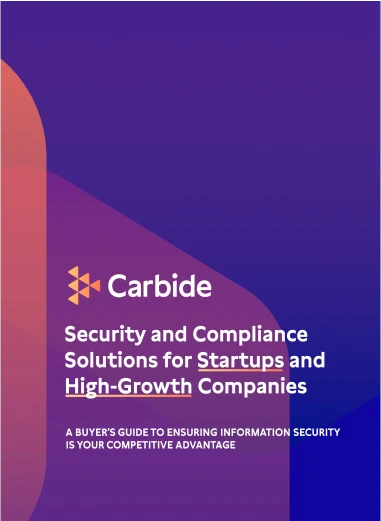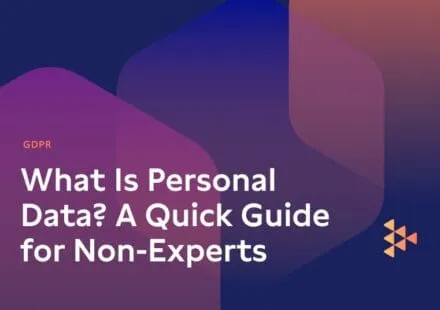Today, “personal data” is collected, shared, and processed constantly, but what exactly does that mean? Whether you’re a business owner, employee, or just someone trying to understand your digital footprint, this guide breaks down what personal data is, why it matters, and how to protect it. We’ll explain how laws like the GDPR define personal data, and help you identify what types of information fall under that category.
What Is Personal Data?
Personal data is any information that can be used to directly or indirectly identify a person. That includes obvious data like your name or email address but it also includes things like IP addresses, GPS locations, device IDs, and even behavioral data.
Under the General Data Protection Regulation (GDPR), personal data refers to: “Any information relating to an identified or identifiable natural person (‘data subject’).”
This broad definition means a lot of what you interact with online and offline may count as personal data.
Key Characteristics of Personal Data
Personal data:
- Relates to a living individual
- Can identify that person directly or indirectly
- Is used in personal, commercial, or governmental contexts
Common Examples of Personal Data
To make this more concrete, here are some real-world examples of personal data:
| Type | Examples |
| Basic Identity Info | Full name, address, phone number |
| Digital Identifiers | IP address, device ID, browser fingerprint |
| Demographic Info | Age, gender, date of birth |
| Financial Info | Credit card number, bank account details |
| Location Data | GPS coordinates, city, check-in history |
| Online Activity | Search history, social media profiles, cookies |
| Employment Data | Job title, work email, salary |
| Biometric Data | Fingerprints, facial recognition, voice recordings |
Some of these (like biometric data or health records) are considered special categories of personal data, which require extra protections under GDPR and if the health information is that of an American citizen, then laws like HIPAA will apply.
Special Categories of Personal Data
The GDPR classifies some personal data as particularly sensitive and deserving of higher protection. This includes:
- Racial or ethnic origin
- Political opinions
- Religious or philosophical beliefs
- Trade union membership
- Genetic data
- Biometric data (when used for ID purposes)
- Health information
- Sex life or sexual orientation
Processing these types of data is generally prohibited unless specific legal conditions are met (such as explicit consent or public health exceptions). For an organization, handling this category of data comes with increased risk and obligations. Carbide helps streamline safeguards and document compliance. Explore how our platform supports GDPR.
How Does GDPR Treat Personal Data?
The General Data Protection Regulation (GDPR) stands as a landmark piece of legislation in data privacy, recognized globally for its unparalleled comprehensiveness. At its core, the GDPR establishes a robust framework that dictates precisely how organizations must handle personal data any information relating to an identified or identifiable natural person. This includes stringent regulations governing every stage of the data lifecycle: from its initial collection, through its subsequent usage and storage, and ultimately, its sharing with third parties. The law aims to empower individuals by giving them greater control over their personal data while holding organizations accountable for its responsible and secure processing.
Here’s how GDPR impacts personal data:
1. Data Collection Must Be Lawful and Transparent
Organizations must tell you what data they collect and why. They also need a legal basis for collecting it (like consent or contractual necessity).
Read more about GDPR compliance regulations to understand how your organization can stay ahead.
2. You Have Rights Over Your Data
GDPR gives individuals rights over their personal data, including:
- The right to access
- The right to correction (rectification)
- The right to erasure (“right to be forgotten”)
- The right to object to processing
- The right to data portability
Learn more about these rights in our GDPR compliance checklist.
3. Data Must Be Secure
Organizations must implement strong technical and organizational safeguards, like encryption, access controls, and incident response plans to protect personal data. For companies, GDPR compliance means more than legal fine print it requires embedding privacy and data protection into your systems. See how Carbide helps companies automate GDPR readiness.
What’s Not Considered Personal Data?
Not all data is personal. Here are a few types that typically don’t fall under GDPR’s definition:
- Truly anonymous data: Data that’s been de-identified so no individual can be identified at all.
- Aggregated data: Summarized data that can’t be traced back to individuals.
- Business data: Company names, general contact info (like info@company.com) when not linked to an individual.
Note: If anonymized data can reasonably be re-identified, it still counts as personal data under GDPR.
Why Does Personal Data Matter?
Data is a valuable resource and personal data can be used to:
- Build detailed user profiles
- Influence decisions (like credit approvals or hiring)
- Power targeted advertising
- Enable identity theft or fraud if misused
According to a 2023 report by the World Economic Forum, trust in how organizations handle personal data is declining, underscoring the need for stronger safeguards. This erosion of trust reflects growing concerns around surveillance, exploitation, and the increasing complexity of data ecosystems. As highlighted by GDPR Local, many organizations struggle with data mapping, vendor management, and maintaining a clear understanding of their data flows factors that directly impact how secure and compliant they are. Without a clear strategy, it becomes harder to uphold user rights and protect personal information at scale.
How Can You Protect Personal Data?
Whether you’re an individual or an organization, here are practical ways to protect personal data:
For Individuals:
- Be cautious with what you share online
- Use strong passwords and 2FA
- Regularly clear cookies and browsing data
- Review privacy settings on apps and platforms
- Avoid public Wi-Fi for sensitive transactions
For Businesses:
- Conduct a data inventory and map personal data flows
- Implement role-based access controls
- Use encryption and secure storage solutions
- Regularly train employees on data protection
Partner with compliant vendors - Create a written data retention and disposal policy
Is encrypted data still personal data?
Yes, if the data can be decrypted and re-linked to an individual. It’s still protected under GDPR.
What’s the difference between personal data and sensitive data?
Sensitive data (e.g., health records, racial origin) is a subset of personal data and requires additional protections.
Does GDPR apply to B2B data?
Yes, if the data can identify an individual such as a named work email (e.g., john@company.com).
What types of businesses need to comply with GDPR?
Any organization that collects or processes data of individuals in the EU, regardless of where it is based.
What counts as personal data under GDPR?
Personal data includes any information that can identify an individual such as names, email addresses, IP addresses, or device identifiers.
Is consent always required under GDPR?
No. Consent is one of several legal bases. Others include contractual necessity, legal obligation, and legitimate interests.
Do small businesses need to comply with GDPR?
Yes. Small businesses are not exempt but may have simplified documentation requirements.
How often should we review our GDPR compliance program?
At least annually or whenever you launch new products, expand to new regions, or change data processing practices.
How often do GDPR audits happen?
They may be scheduled annually (internally), triggered by customer requests, or occur at random by regulators. Organizations processing high-risk data are more likely to be audited.
What documentation do I need for a GDPR audit?
At a minimum, a Record of Processing Activities (RoPA), privacy and security policies, vendor agreements, breach logs, consent records, and employee training documentation.
Do I need to notify someone if I fail an audit?
If the audit uncovers significant issues like unreported breaches or unlawful data use you may need to notify a supervisory authority. Otherwise, internal audits are for corrective action.
How can I stay audit-ready year-round?
Use a platform like Carbide to continuously monitor controls and policy sign-off, maintain documentation, and more. Regular training and quarterly internal reviews also help.

